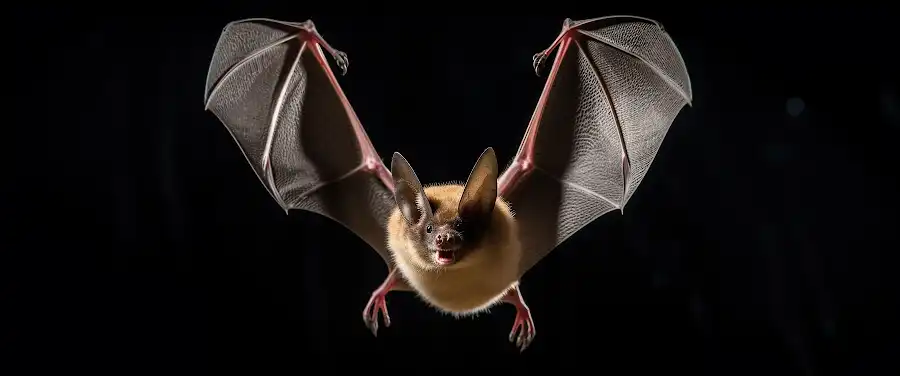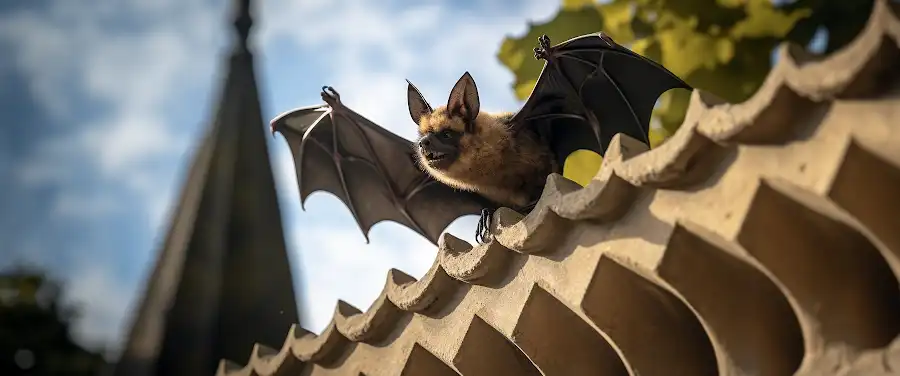
Ever found an uninvited guest fluttering around your home in the dead of night? Bats, those nocturnal creatures that can send a shiver down your spine, are often unwelcome visitors in our homes. Now, if you’re picturing yourself as Bruce Wayne, transforming your home into a gothic Batcave, think again. Unlike their superhero connotations, real-life bats, though fascinating in their behavior, can turn into a wildlife nuisance when they invade your space unannounced.
Now, if you’re thinking, “I’ve got this, I’ll go for the DIY bat removal,” hold onto that thought a bit. Doing it yourself might seem like an instant solution (not to mention, cost-effective), but does it outweigh the possible risks and challenges? Hopping onto the DIY train without thorough understanding and preparation can be like a journey full of unseen potholes. It’s essential to weigh up the pros and cons of DIY bat removal before diving headlong into it, armed with just a ladder and a pair of gloves.
Indeed, embarking on a DIY bat removal adventure can result in an exciting story to tell, but it can also open a Pandora’s Box of potential complications. It not only requires a strong understanding of bat behavior and legal aspects associated with wildlife handling, but a miscalculated move can lead to unfortunate accidents or health risks. Let’s take a closer look at the upsides and downsides of shouldering this task on your own before we delve more deeply into some common bat removal techniques.
What Are the Advantages of DIY Bat Removal?

When considering DIY bat removal, the most appealing aspect for many is the level of control it provides. As the bat remover, you’re in the driver’s seat, capable of handling the situation at your own pace and based on your preferences. This can be particularly beneficial for those who are uncomfortable with strangers entering their property or those who prefer to take matters into their own hands.
In addition, DIY bat removal can be a cost-effective solution. Commercial bat removal services can be expensive, with prices sometimes reaching several hundred bucks. However, with a DIY approach, the costs boil down to purchasing the necessary equipment and investing your time.
Lastly, the process of removing bats yourself can be an incredible learning experience, leading to skill development. Not only does it require you to understand the behavior and habits of bats, but you’ll also develop practical skills related to bat exclusion and home maintenance.
Can DIY Bat Removal Be Beneficial for Wildlife Conservation?
Many people may not realize that DIY bat removal – if done responsibly – can potentially have a positive impact on bat conservation. Bats play a crucial role in our ecosystem, offering natural pest control, pollination, and seed dispersal US National Park Service.
By removing the bats yourself, you have the opportunity to use non-lethal methods, which support the preservation of bats. Commercial services may not always guarantee this, especially those without a focus on wildlife conservation.
For example, the use of one-way exclusion devices allows bats to leave your property without harm, while preventing their return. The knowledge and skills acquired during the DIY removal process can further contribute to ensuring these creatures remain protected and respected despite their undesirable presence in human habitats.
Remember, while there are various advantages to handling bat removal yourself, it’s essential to approach the task with responsibility and respect for these creatures and their role in our ecosystem. Now, let’s turn our attention to the less glamorous side – the potential downsides of DIY bat removal.
However, it’s crucial to understand that while there are benefits to DIY bat removal, it’s not all sunshine and roses. If not done properly, there can be potential risks not only to you, but also our furry friends residing overhead.
What Are the Disadvantages of DIY Bat Removal?

The concept of do-it-yourself (DIY) projects can be fascinating and even enticing but when it comes to bat removal, it’s crucial to understand the downsides. Bats are not just another household pest; they’re an integral part of our ecosystem. However, when they infringe on your personal space, it’s understandable that you’d want to take matters into your own hands. But before you reach for your DIY toolkit, let’s consider the risks and potential negative impacts on both the homeowner and the bat population.
Risks Associated with DIY Bat Removal
Firstly, there’s a considerable risk of injury and disease transmission. Disturbing a bat colony could lead to a defensive attack which could result in scratches or bites. This is no trivial matter as bats can transmit deadly diseases such as rabies. Moreover, bat droppings, known as guano, can lead to a serious lung infection called histoplasmosis. In 2019, the Centers for Disease Control and Prevention recorded an increase in bat-associated histoplasmosis cases. This clearly indicates the potential dangers involved with untrained individuals attempting a DIY bat removal.
Impact on Bat Population
Another major disadvantage of DIY bat removal is the potential harm it can cause to the bat population. Bats play a crucial role in our ecosystem by controlling pest populations and aiding in pollination. Unskilled attempts at bat removal can disrupt colonies, drive bats out of their natural habitats, and even result in mass fatalities.
Can DIY Bat Removal Be Detrimental to Wildlife?
Improper removal can indeed cause distress or harm to the bats. In the face of immediate danger or disturbance, they may abandon their young, leading to a surge in mortality rates. Bats are protected by wildlife laws in many jurisdictions due to their ecological importance and dwindling numbers. Therefore, it’s essential, both ethically and legally, to ensure their safe removal and relocation.
The Role of Professional Wildlife Rehabilitators
This is where professional intervention comes in. Professional wildlife rehabilitators have the necessary training and equipment to ensure that both the homeowners and the bats are safe during the removal process. They further ensure that bats are relocated safely without disruption. These rehabilitation experts help maintain balance by protecting these creatures and their valuable contributions to our ecosystem.
By understanding the pros and cons of DIY bat removal, you can make an informed decision that protects your household as well as wildlife. Due to the various risk factors involved and the potential harm to bats, it is arguably safer and more responsible to leave bat removal to professionals.
Now, let’s take a closer look at the murky legal waters surrounding DIY bat removal. Long story short: It’s not as straightforward as you might think.
In the realm of household woes, having bats find their way into your living space can certainly create a sense of panic and might tempt you to pull up your sleeves for a round of DIY Bat Removal. But before you make that decision, let’s take an insightful dive into the Pros and Cons of DIY Bat Removal, making sure you are well-informed and well-prepared.
Pros of DIY Bat Removal
When considering the DIY approach, the foremost advantage is the possible monetary savings. Since you won’t be hiring a professional bat removal service, you manage to save those dollars.
Implementing your own preventive measures may bring satisfaction. By proactively sealing your house against bat invasion, you can give yourself a deserved pat on the back.
DIY measures can also bring immediate solutions. Some issues might need urgent action and waiting for a professional service could potentially let the situation escalate.
Cons of DIY Bat Removal
Despite the potential benefits, the DIY approach comes with serious caveats. The leading concern is the risk to bats, an essential part of our ecosystem and protected species in many regions. Inappropriate removal methods could be fatal to them, leading to penalties from wildlife authorities.
A lack of experience and knowledge in handling bats raises your exposure to potential health risks, such as diseases like Rabies. Incorrect or incomplete elimination could result in re-infestation.
Missing out on professional guidance can lead to overlooking the root cause of the issue, leaving room for future problems.
Conclusion
In conclusion, the Pros and Cons of DIY Bat Removal should be weighed carefully, with special attention to the potential threat to local bat populations and your personal health. Although cost-saving and immediate resolution is appealing, the risks associated with DIY management might be substantial.
Your decision should be guided by the principle that wildlife, in this case bats, should be respected, and human health and the ecosystem, protected. So, weigh your options, consider professional assistance, and create an informed, responsible action plan.
Remember, protecting our dwelling does not have to come at the cost of harming the environment around us. Stay informed and stay safe.




